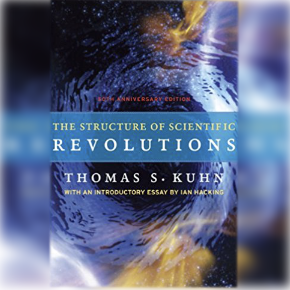科学革命的结构
关于本书:
A good book may have the power to change the way we see the world, but a great book actually becomes part of our daily consciousness, pervading our thinking to the point that we take it for granted, and we forget how provocative and challenging its ideas once were—and still are. 科学革命的结构 是那种书。当它于 1962 年首次出版时,它是科学史上和科学哲学上的一个里程碑事件。五十年后,它仍然有很多教训要教。
和 科学革命的结构, Kuhn challenged long-standing linear notions of scientific progress, arguing that transformative ideas don’t arise from the day-to-day, gradual process of experimentation and data accumulation but that the revolutions in science, those breakthrough moments that disrupt accepted thinking and offer unanticipated ideas, occur outside of “normal science,” as he called it. Though Kuhn was writing when physics ruled the sciences, his ideas on how scientific revolutions bring order to the anomalies that amass over time in research experiments are still instructive in our biotech age.
This new edition of Kuhn’s essential work in the history of science includes an insightful introduction by Ian Hacking, which clarifies terms popularized by Kuhn, including paradigm and incommensurability, and applies Kuhn’s ideas to the science of today. Usefully keyed to the separate sections of the book, Hacking’s introduction provides important background information as well as a contemporary context. Newly designed, with an expanded index, this edition will be eagerly welcomed by the next generation of readers seeking to understand the history of our perspectives on science.
关于作者:
托马斯·库恩 (Thomas Kuhn) (1922-1996) 是麻省理工学院哲学名誉教授。他的许多著作包括《科学革命的结构和黑体理论》和《量子不连续性,1894-1912》,均由芝加哥大学出版社出版。
提取的信息 亚马逊产品页面。
